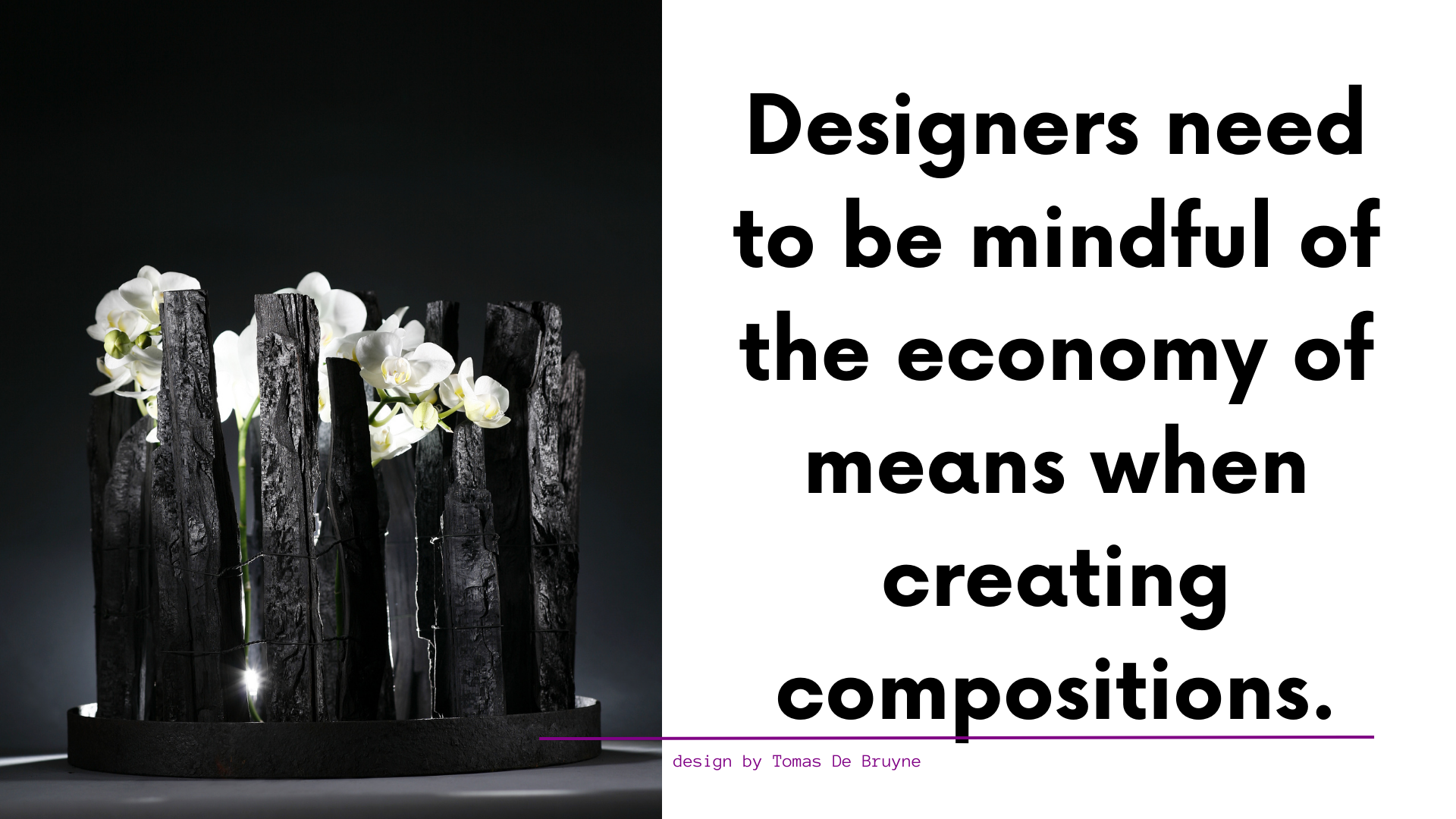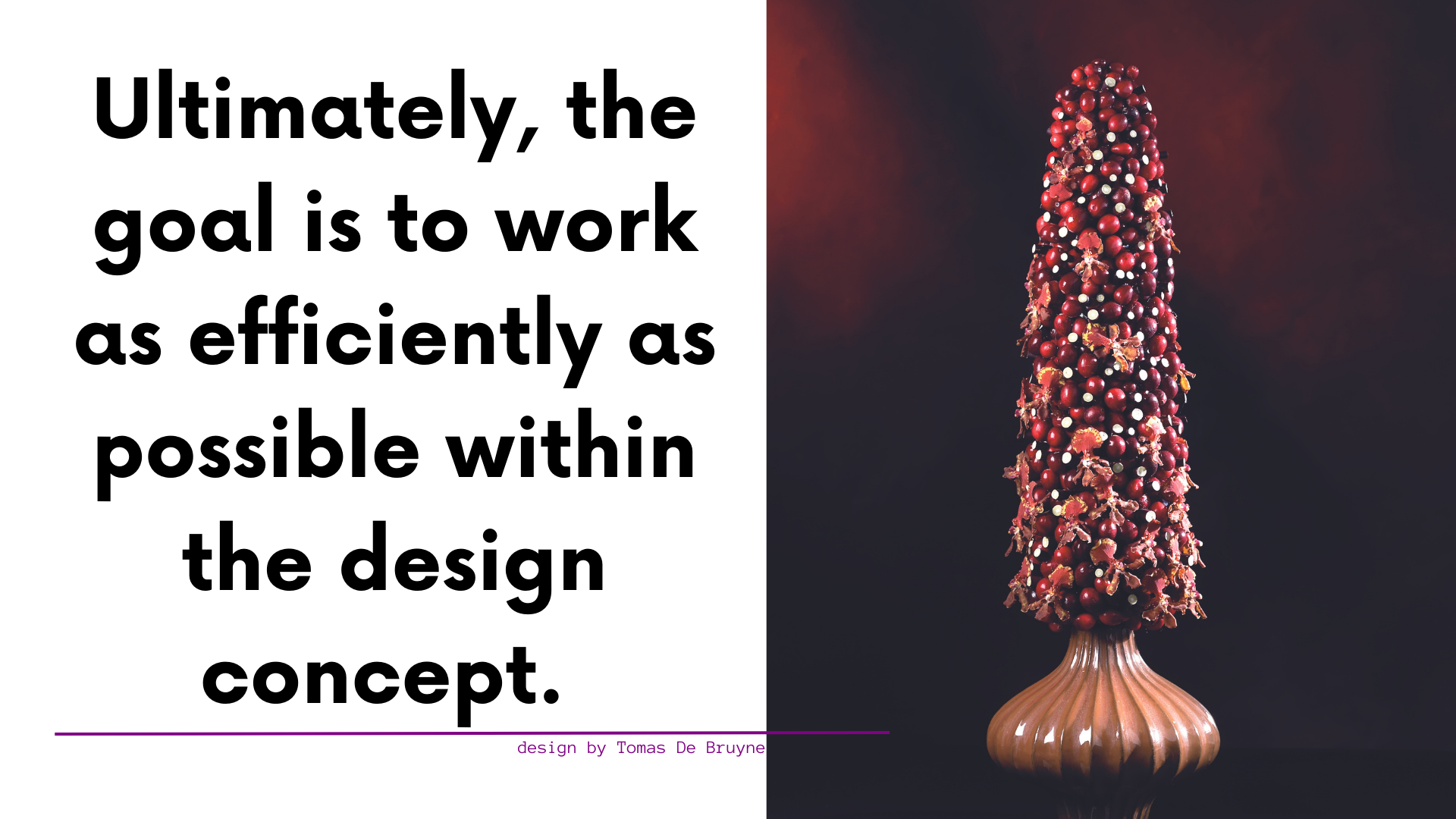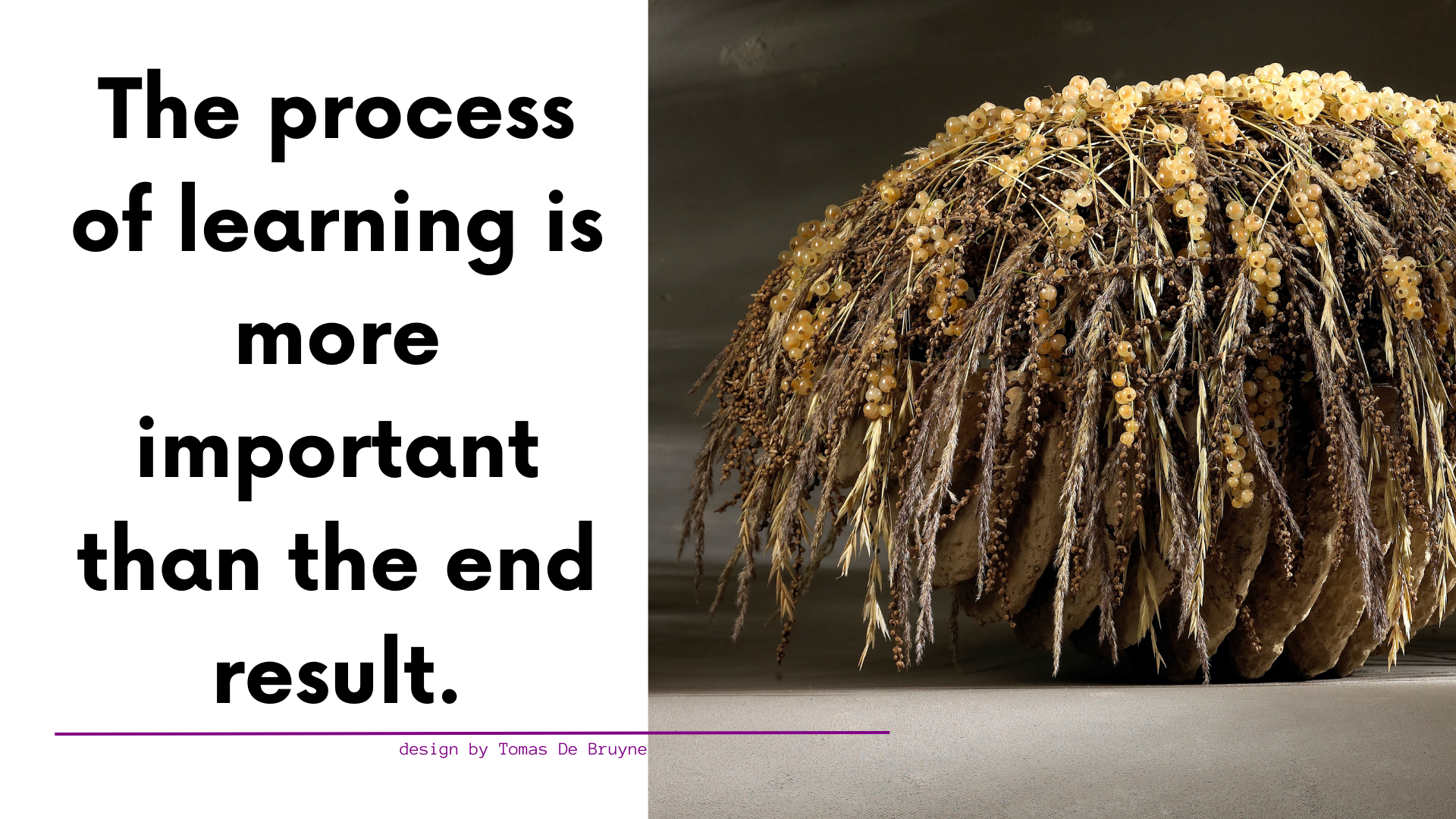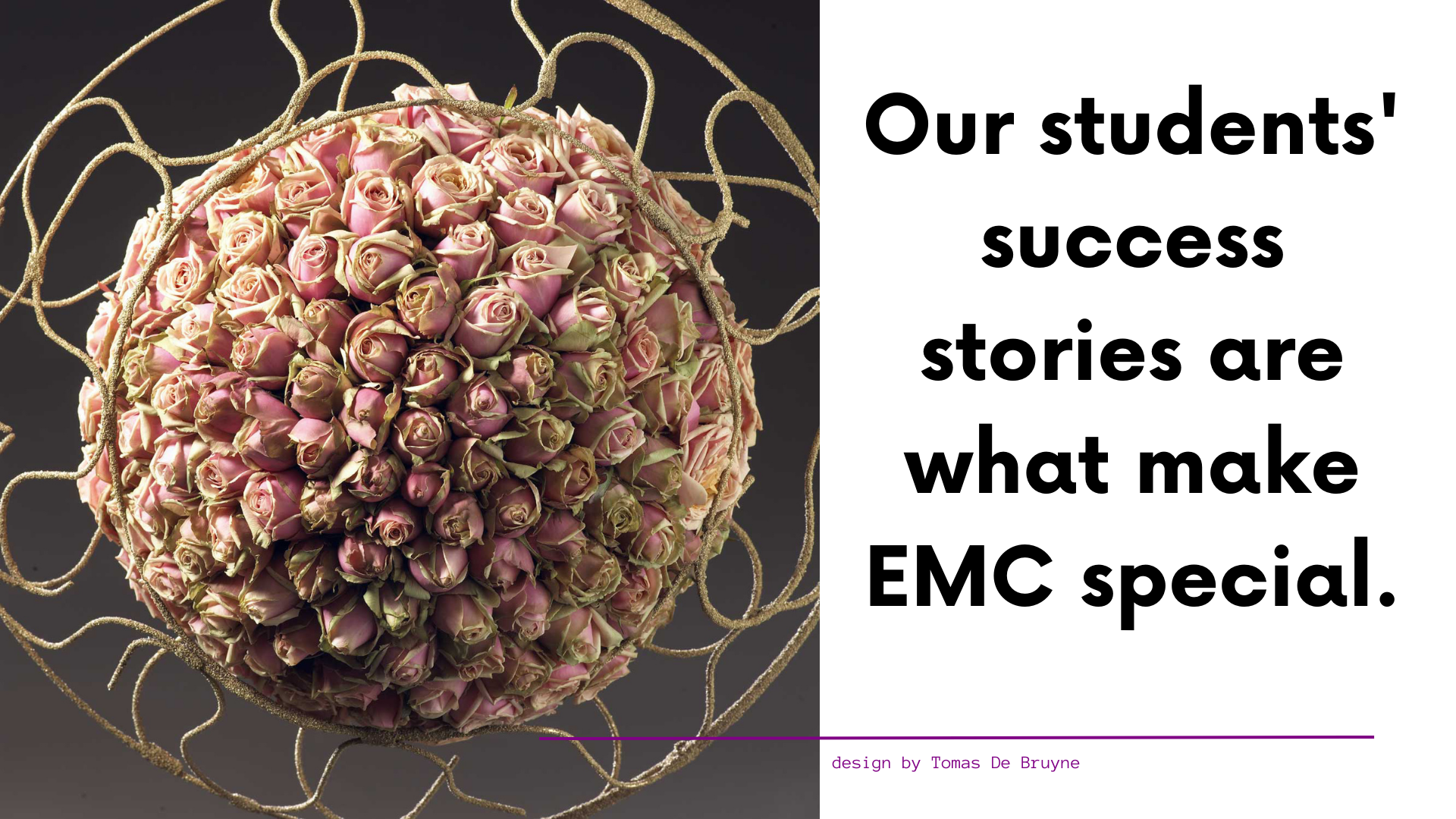Structures and Constructions
May 10, 2023Why and what differentiates these elements?
Inside the Advanced Course curriculum
At EMC, we have an attitude that is focused on our students' success. Our mission statement is "Your knowledge – Your success – Our passion." We believe that education is a collaborative effort between us and our students. Our passion lies in designing a comprehensive curriculum, an exceptional learning process, and providing outstanding guidance, but ultimately, it is our students who are the driving force behind their own success.
In order to ensure that their journey during the EMC program is fruitful, of course, our curriculum is addressing not only theoretical information, but is very much anchored into the practical side of our metier.
Efficiency is a crucial aspect of floristry, and designers need to be mindful of the economy of means when creating compositions. This means that they must think carefully about how to use their resources, including time, energy, and materials, as effectively as possible. To achieve this, they must first decide whether to create a Structure or a Construction for their composition.

The terminology and definitions of these concepts constitute an entire lecture during the Advanced Course of European Master Certification and our lead instructor, Toms De Bruyne, dives deeper into these notions on the very first day of theory. Practical demonstrations follow the theory and students have the opportunity to see the implementation ion these notions into practice, ask questions and dive into further understanding how important it is to control every decision you make when designing with flowers while keeping the focus on achieving the desired outcome.
When making this decision, designers need to consider the direction in which they approach their design projects. They should analyze the cost of design, including the time, materials, labor, and construction time required. They must also think about how the composition will be supported, and whether the construction will be part of the visual impact of the design or just a support for the flowers. This decision will directly impact the amount of botanical materials that will be incorporated into the design, as well as the time required to insert the flowers.
Ultimately, the goal is to work as efficiently as possible within the design concept. Constructions can be useful when the perceived value of the visual impact is greater than the time invested in labor. However, if this value is not economically feasible or desirable, the choice of a Structure is preferable for a design project. In other words, designers must carefully consider the trade-offs between the visual impact of a composition, the time and labor required to create it, and the resources they have available.

In floral design, a Structure refers to a frame or support system that is created to provide functional support to botanical materials. When designing with a Structure, the focus is on constructing a sturdy framework that can hold and support the flowers and other botanicals in place. The emphasis is placed on the functional use of the structure, rather than on its visual appearance.
Structures are typically created using materials such as wire, wood, or foam. The designer must carefully consider the size and shape of the structure, as well as the type of botanical materials that will be used, in order to ensure that the structure can adequately support the weight of the flowers. In most cases, the structural framework is hidden by the flowers and other botanicals. This means that the design should be constructed in such a way that the structure is not visible to the viewer. The flowers should be arranged in a way that covers the structure, while still allowing it to provide the necessary support.
By using a Structure, designers can save time, energy, and materials, as the framework provides a sturdy base that can be reused for multiple designs. Additionally, using a Structure allows designers to create larger and more elaborate compositions that may not be possible with a Construction, as the structure provides a strong support system that can handle the weight of the flowers and other botanicals. In floral design, a Construction refers to a composition that involves the building of a structure as an integral part of the design aesthetic. Unlike a Structure, which is primarily functional and meant to be hidden by the botanical materials, a Construction is intended to be visible and contribute to the overall decorative aesthetics of the design.

A Construction can take many forms, from formal to representational, and may result in an open or closed character. The key element of a Construction is the building of a solid framework or structure, which provides a base for the floral elements to be added. The designer must have good binding techniques and ensure that the arrangement is stable and not off-balance. The beauty and focus of a Construction lies in the fact that it is visible as part of the decorative aesthetics of the total design. The framework can be made from a variety of materials, including wire, wood, or foam, and can take on any shape or form that the designer desires. The floral elements are then added to the structure in a way that complements and enhances its shape and form. Creating a Construction requires a high level of skill and attention to detail, as the designer must ensure that the structure is strong enough to support the weight of the flowers and other botanicals. However, when done correctly, a Construction can result in a stunning and visually impressive composition that is sure to impress viewers.
Obviously, blogging a short description of these two notions is nowhere near to the experience our Advanced Course students have while in class. The entire Advanced Course curriculum is built on the individual growth of each student, as they have all successfully passed through the Foundation and Practicum. It is a really amazing time to see how the Elements and Principles of Design build up into a full understanding on how concepts can be controlled, manoeuvred and implemented into edgy designs and ultimately, visually impacting and aesthetically pleasing floral arrangements.

Our ultimate goal as floral designers is to perform better and bring added value to what we deliver to our clients. While financial compensation is important, it should not be the only measure of our success. We believe that the true value of a job lies in the things we learn throughout the process. Education, as Nelson Mandela once said, is the most powerful weapon we can use to change the world. However, the quality of education determines the direction of that change. People are motivated to learn either by necessity or by the desire for more knowledge and enjoyment.
To become a better version of yourself, your focus should always be on how and what to learn, not just on performance. The process of learning is more important than the end result. Practice is key to achieving expertise, and the quality of the education program is crucial for success. That is precisely the reason why EMC is structured into 3 separate Course, so that students truly get the chance to learn, practice and perform - exactly in this order.

At EMC, we prioritize the highest quality in all aspects of our students' experience, including curriculum, design, teachers and coaches, feedback, challenges, and communication. Our ultimate goal is to help our students become designers with the ICE Effect, activating their creative potential and achieving their highest potential. EMC is not just about providing education, it's about empowering our students to step out of their comfort zone, pushing themselves to reach their full potential as floral designers, and finding their own unique style. It's about their growth, hard work, and creativity being elevated to new heights. We are here to support our students in their journey towards success, but it is ultimately their hard work and dedication that will make the difference.
Our students' success stories and personal experiences are what make EMC such a special place. We are committed to providing a learning environment that enhances their personal and professional development. At EMC, we believe that every student has the potential to become a great floral designer, and it is our privilege to help them reach that potential.
Don't miss a beat!
New blogs, course offerings and what we are up to delivered to your inbox!
We hate SPAM. We will never sell your information, for any reason.

